
The Red Cross is going green
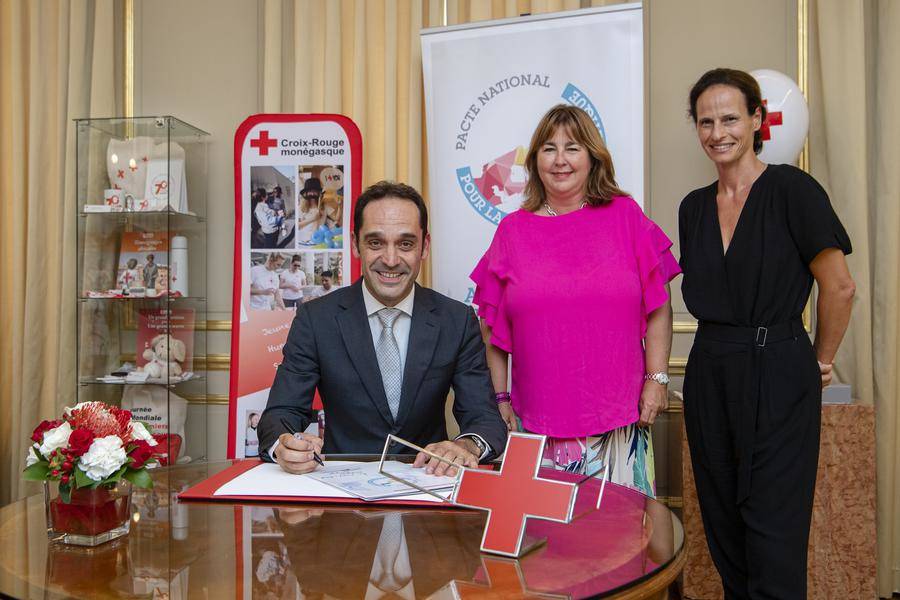



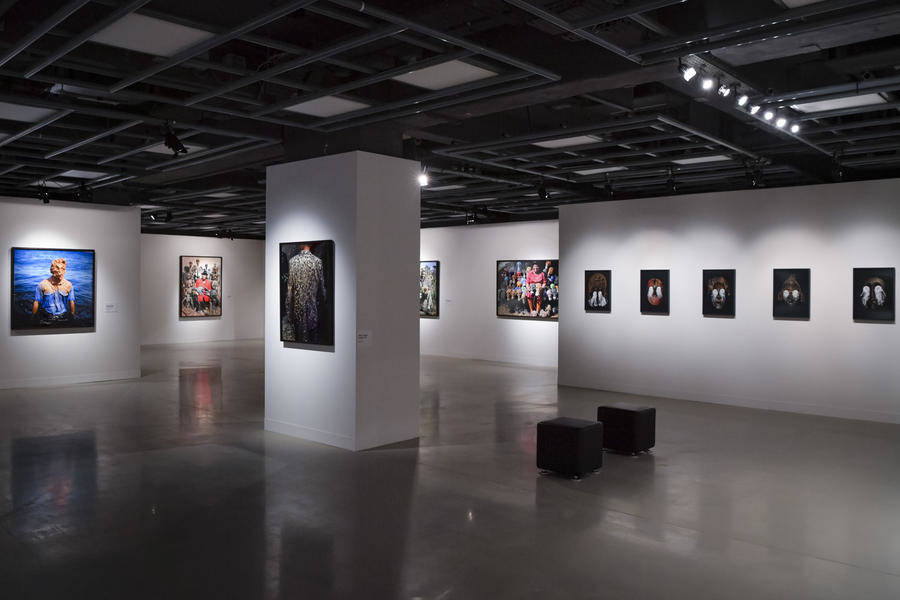
Echoing the Dali exhibition at the Grimaldi Forum, Monaco’s cultural department has organised a photographic exhibition at the Salle du Quai Antoine I, highlighting the links between surrealism and contemporary photography.
The public will be able to discover over 100 works by six artists: Thierry Fontaine, Agnes Geoffray, Philippe Durand, Sandrine Esther Elberg, Michel François and Boris Mikhailov.
Each of the photographers appropriates in his own way an artistic trend of more than a century: the mistrust with regard to any form of realism, the superposition of images, the unusual framing or the photomontages, the change of scale, close-up vision revealing incongruous details or creating all kinds of imaginary objects.
The visitor is immersed in a universe where the imagination is constantly solicited.
The exhibition is open from Tuesday to Sunday, 1pm to 7pm. Admission is free.
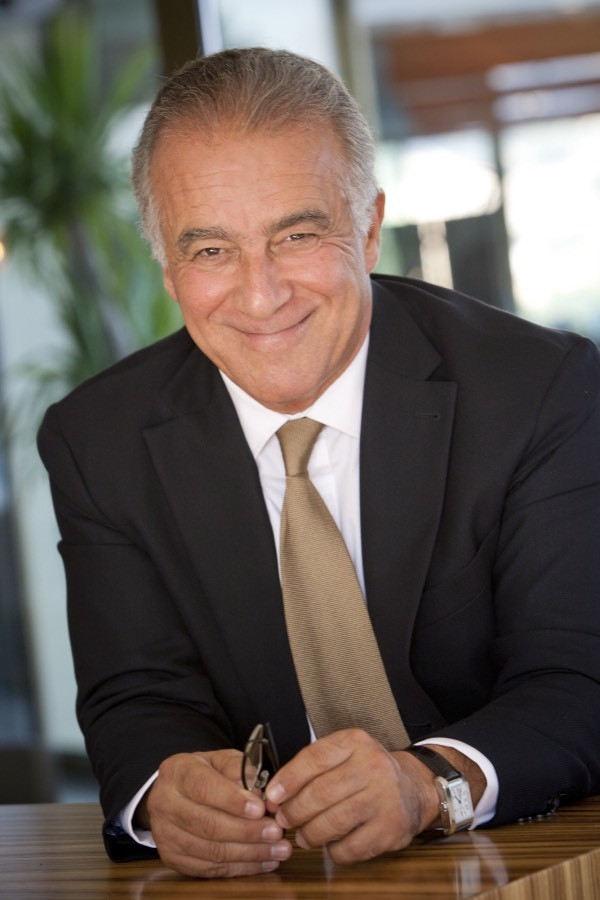
The Fairmont Monte Carlo is one of the most recognisable architectural achievements in the Principality of Monaco. Cradling the Mediterranean coastline, this enormous contemporary hotel and its 600-strong staff form a unique little village, serving as a platform for some of the region’s largest congresses and accommodating hundreds of international guests every night.
At the helm is Xavier Rugeroni who, over recent years, has transformed the Fairmont from a tired, outdated hotel to one of the most important business-generating venues in the Principality, with a world-renowned restaurant and a unique rooftop “beach”.

Now, the Fairmont is set to enter another interesting phase of its existence: it will be a neighbour to Monaco’s ambitious new eco-district, which is currently being constructed on the sea.
Regional Vice-President and General Manager Xavier Rugeroni spoke to Monaco Life about his incredible achievements so far and what he thinks the future holds for one of the Principality’s most iconic hotels.

Cassandra: Xavier, you have worked at numerous hotels across the globe, you are fluent in four languages, and was awarded General Manager of the Year of the Principality of Monaco in 2001 and decorated with the Medaille de l’Ordre de St. Charles by Prince Albert in 2005. What brought you to the Fairmont?
Xavier: What attracted me was the tremendous challenge that lay ahead. The hotel was iconic and had been the focus of the Principality for many a year, but it had lost a bit of its glamour. It was a tremendous opportunity to do some very special things. That was 12 years ago, which has been the longest stint I have ever done in any one job, but I have loved every minute of it.
Tell us about the challenges when you came into the position of general manager…
I was basically repositioning the Fairmont in a different commercial environment. The whole promotional base had changed completely. I think the challenge for me was to try and bring it into that context, but at the same time retain a lot of its strength, and that was very much its people. One of the biggest challenges we had at that time was the hotel had drifted for a couple of years and that had an impact on staff motivation, so it was a matter of rekindling that and giving them hope and vision for the future. But it was relatively easy to be done because the base was very strong.
How many staff are employed at the Fairmont?
All year round we are looking at around 550 on average, but in the summer it is closer to 620. So it is a small village, we have all the emotions, all the politics, all the gossip… everything that goes along with it, it’s great.

What would you say have been the biggest achievements of your career here?
I think the biggest achievement is that we have completely repositioned ourselves as a modern entity, coming back from a very traditional position. The challenge was bringing the Fairmont into today’s world, defining its purpose and role in the marketplace, particularly in a destination like Monaco. We had to challenge the status quo. With the Fairmont being Canadian, we had a footprint that was very much in our DNA, and at the same time we needed to adapt to the European way of life, but then we also needed to become a little bit more contemporary.

The way we did that, which was challenging at the time because not a lot of people were understanding, is when we brought in Nobu. It was the first internationally-branded restaurant in Monaco. Nobody had done anything like it. And that was topped when we brought in Nikki Beach. Everybody was wondering, “what on earth are they doing?”, but at the end of the day it needed to be done because the Fairmont had to come in line with the times. And looking back on it after five years, it has possibly been one of the best decisions I have made.
Tell me about the image of the Fairmont internationally?
I think the best way to say it, is that the Fairmont today is the postcard of Monaco. Yes you have palaces like the Hôtel de Paris, the Hermitage and the Metropole, but at the end of the day the Fairmont keeps Monaco ticking along. Because without the Fairmont we can not do what we do in Monaco. For example, you have big city-wide events like congresses, that take 500 rooms alone (we have a 600 room capacity). Without us it would not be possible to stage these events in the Principality. In addition to that we have a fantastic food and beverage offer. So we are regularly chosen as the hotel of choice for people because here you can have the conference, the bedroom space and the food and beverage offer.
The land extension and new eco-district is taking shape directly in front of the Fairmont. What impact has that had on the hotel?
Well of course it has had an impact given its proximity, but at the same time we are telling people: “Have a look at something which is unique, you are not going to see it again in Europe for the next 50 years possibly, so make the most of it!”. It is disruptive and noisy, but it is not necessarily disrupting business. Obviously it affects certain bedrooms but people spend a lot of the time taking selfies.

Let’s jump forward to when it is finally completed… what will be the Fairmont’s position then?
We will be in the heart of the new quarter of Monaco. It’s as simple as that. We already are at the heart now, with the Grand Prix, the Grimaldi Forum, the Monte Carlo Casino Square. Soon, no one will be as close to this unique project as we are. We too are in the process of change; we are renovating to create a new room type called ‘Marina bay rooms’, overlooking the new harbour. So yes, it is going to be a very important part of our future.

Tell us more about the renovation that the Fairmont is set to undertake…
The entire hotel will be renovated. We are starting with the Saphir 24 bistro lounge and bar that we are sitting in right now, which will be completed by the end of the year. And then we will be refurbishing all the bedrooms and bathrooms, corridors, and the restaurants. So it is a very large renovation that will last about two years.
And the exterior? Will there be some kind of synergy with the new eco-district?
A few months ago we discovered that this is, in fact, a protected building because of its contemporary architecture, so we must keep the iconic design, which is very much the DNA of the hotel anyway. But we will be cleaning the façade and changing the windows.
Tell me about your environmentally sustainable practices.
We are very much involved in Prince Albert’s environmental vision. We have an internal green team and each department has a ‘champion’ who is responsible for telling us the improvements we can make. It is an A to Z kind of approach. Guests and event planners are encouraged to support the Fairmont’s green actions in waste management, recycling and energy efficiency, use linen napkins and digital communication over print. Guests are given information on sustainable activities like walking, bicycle tours, seasonal products and cooking classes. We use suppliers who limit the volume of non-recyclable packaging, we have organic eggs for breakfast, and participate in Earth Hour. There’s free electric recharging for customers who come with an electric vehicle, discounts on electric car rental, and carbon offset through the Prince Albert II Foundation. It is a multi-faceted approach.

We have an enormous number of high profile guests who pass through these doors, but I can’t really tell you about them for privacy reasons. I will, however, tell you the one person who has marked me the most, and I can say this because he is very much a part of the Fairmont family. That is Robert De Niro, who is of course the major shareholder of Nobu. He is the most down to earth individual you can imagine, so much so we had a drink together for about an hour and a half before he officially launched Nobu, and kept everybody waiting!
You were also behind the enormous success of Private Dining. Tell us how that started…
Private Dining is an outside catering operation and started eight years ago when Prince Albert specifically asked the Fairmont to provide the food service for his wedding. We were doing low key catering at the time, maybe five to 10 events a year. Then we catered for six thousand guests the day of the wedding, it was a military operation. After that it just snowballed. Today, we have around 150,000 covers a year with outside catering in France and Monaco. There is certainly much to be proud of here at the Fairmont.

Marcos Marin’s fate was sealed the moment he created a portrait of Princess Grace. The piece was delivered to Prince Albert at an incredibly emotional moment, just weeks after the death of his father, reigning Prince Rainier III. It spawned a relationship that the Brazilian artist could never have predicted, one of friendship, mutual respect, and opportunity.
Marcos Marin comes from an eclectic background, to say the least. Born and raised in Brazil, his father is originally from Malaga, Spain, while his mother heralds from Lebanon.
At the age of five, Marcos began to study the piano, following in the footprints of his father who was a lyric singer and soprano, working for the Brazilian cinema and theatre industries.
By age 14, he was already a classical pianist, dabbling in the art of painting and sculpting at his home studio in Brazil. But it was a trip to Paris in 1990 to finalise his piano studies that introduced Marcos to a whole new world of pleasure: optical art.

“I needed to work a bit in Paris so I found a job with Victor Vasarely, the master in optical art,” Marcos explains. “And that completely changed my life because I was totally inspired by him and I started to produce portraits. I have always loved people and how famous icons influence people, they have always been the target subjects for my paintings.”
It was at that moment that everything Marcos understood about the creative world was turned onto its head.
“I had a classical, realistic style beforehand, but that all changed when I met Vasarely and I started learning how to mix optical elements with portrait elements.”

But the young performer was not pretentious; he never used his position with Vasarely to sell himself as a working artist. Nonetheless, little by little, his pieces began to sell until it became time to “put the piano in the armoire”.
“The thing about being a classical pianist is it is very hard. It is interpretative not creative,” remembers Marcos, “it was very severe and I just wanted to be free and create more from music as a composer. I did work in a studio for a while recording, but I found in painting all the freedom that I desired, somewhere to channel my inspiration and finally be free.”
In fact, the piano still takes pride of place beside his easel, serving an important role in the artist’s creative process.
“I play music sometimes and then I express that in my paintings, it is very connected. I see music in a materialistic way through my art.”
Marcos draws much of his inspiration from Chopin, Liszt and Debussy, who is largely considered the first impressionist composer in history. “The art nouveau music inspired me a lot, as did the art nouveau movement, it was a brilliant moment in history,” recalls the artist.
From his relationship with Vasarely, Marcos became acquainted with likes of Jesús-Rafael Soto, Carlos Cruz-Diez and Dario Pérez-Flores, Venezuelan masters otherwise considered as rock legends to the 25-year-old up and comer.
From Paris, Marcos moved to Miami in the early 2000’s, where the famous Art Basel art fair was about to be established. The growing art scene meant that Marcos had to “up his game”, and he started producing many more pieces, propelled by the enthusiasm surrounding the emerging art scene.
“It was incredible time to be working with big name artists, it gave me the credentials in the art world,” says Marcos.
His connection with Monaco came in the form of Delphine Pastor in 2004, who was so impressed by his work that she invited him to do a solo exhibition in the Principality. Six months after their first meeting Marcos opened his exhibition. Its success was unimaginable; all 45 pieces sold during the first show.

One of those was a portrait of Princess Grace, purchased by the palace art director and given to Prince Albert II who, just one month earlier, had lost his father, reigning Prince Rainier III.
“He gave the portrait of Grace to Prince Albert, and he loved it so much that he put the painting in a museum. So I had just arrived in Monaco and I was already in the Warhol museum, side by side with Warhol,” smiles Marcos, still obviously amazed by his achievement.
But the artist’s greatest honour was to come a few months later, when the Prince invited Marcos back to the Principality and asked if he would create a public monument in honour of his late father, Prince Rainier.
“I was not really a sculptor at that stage, but I had made a large sculpture of Mona Lisa four metres high, and it was a huge success in Miami during Art Basel. The Prince said he didn’t want a classical bronze sculpture of his father, but rather something that represents his new, modern way of governing, and he thought my sculpture would best represent that.”

So Prince Rainier III was unveiled on 8th January 2006 at the place he loved best, the grounds of the Monte Carlo Circus Festival.
In less than a year, the emerging artist had managed to have two official portraits in Monaco: Prince Rainier and Princess Grace, the two most important people in the history of the Principality at the time.
“So of course that changed my whole life,” says Marcos, “from a commercial perspective as well because people started commissioning my work.”
The doors of opportunity were flung open, and fashion designer Pierre Cardin approached Marcos in New York to offer him a residency in the castle of the Marquis de Sade in Lacoste, French Provence. He invested in the artist’s monumental pieces, up to five metres high, first created with fibreglass and then aluminium, a far more “noble product to work with,” says the artist.
With Pierre Cardin and Prince Albert on his side, Marcos travelled the world, creating portraits for presidents and royal families, including Russian President Vladimir Putin and French president Nicolas Sarkozy, who asked for a portrait of himself and wife Carla Bruni. Some were gifts from Prince Albert, others were commissioned by the leaders themselves.

“My work became part of the most fantastic art collections in the world,” recalls Marcos. “And considering I am a musician, I also became involved with people from cinema and the music industry, many of whom became my models, like Robert Redford.”
It wasn’t until 2009 that Marcos officially moved to Monaco, and set up his studio right in front of the palace, where he remained until very recently.
“Monaco may be small, but all the important people holiday here and the French Riviera at least once a year so I don’t need to move, all my models come to me!”

One of his most recent portraits is of the legendary American actor Michael Douglas, who was presented with his sculpture as a gift from Monaco, after receiving the life time achievement award at this year’s Monte Carlo Television Film Festival.
It is in that moment, when his subjects first lay eyes on their portraits, that Marcos feels most vulnerable.
“That is the biggest challenge for someone who does portraits, you really hope that they are going to like it, because it is my interpretation of them.”
Marcos reveals that he draws inspiration from many different pictures of his subject while creating a portrait, and the effect is one of ageless beauty.
“When I do the optical transformation, age doesn’t matter,” says Marcos. “I can portray old people, and they become young. It’s a magical mirror for them, so I can confidently say that everybody loves to receive one of my portraits.”
Many of his pieces today are donated to charity, which is fine because there is more than enough artwork to go around.
“I am a workaholic,” shares Marcos, “I work every day of my life, Saturday and Sunday, actually I never know which day of the week it is. I wake up at 6am and start to draw, my painting is very freestyle, if you go close you don’t see straight lines you see the accident of the paint, that is what makes my paintings alive.”

It often takes 15 days to a month to create a portrait that has been commissioned, less time for those that have not.
His latest achievements include the opening of a dedicated Marcos Marin gallery in Marseille, while another is planned for Paris. He is set to launch an exhibition in his home country of Brazil, and of course there is Art Basel in Miami which he continues to attend.
And although the artist has now found his perfect studio in a large historic home in Italy, Monaco will always be a source of inspiration and admiration for Marcos, whose works continue to brighten art houses, fashion shows, charity events and museums in the Principality, and will no doubt continue to do so for many years to come.
Top photo: Marcos Marin with racing driver Felipe Massa
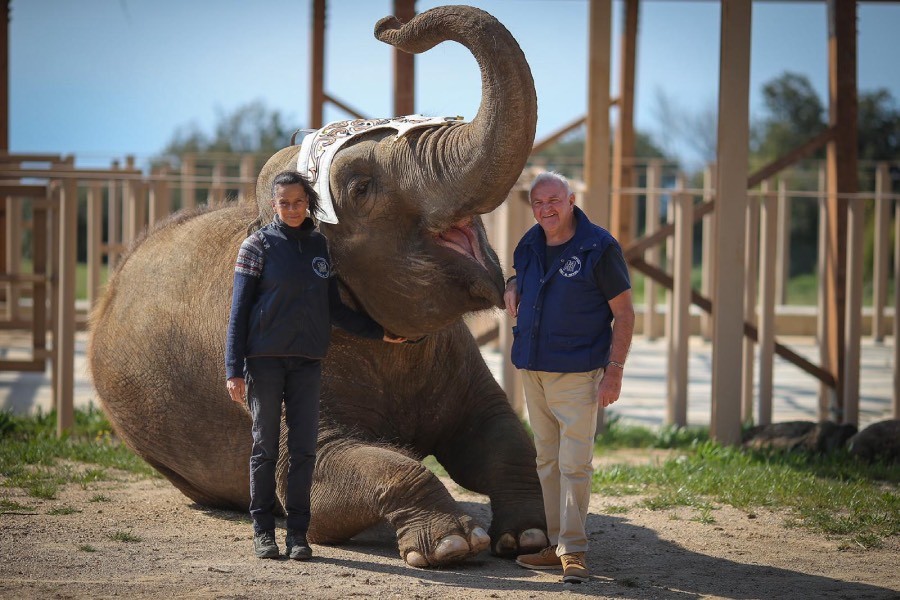
Marcel Peters has worked with animals for decades. He is an accomplished elephant expert and is HSH Princess Stephanie of Monaco’s right-hand man in caring for her rescued elephant Baby, and Nepal, who recently passed away.
Animal advocate Kat Pirelli-Zucchetta caught up with Marcel at the Princess’ compound above Monaco, and discovered the fascinating story of how two zoo animals, destined for death, became the luckiest elephants alive.
Fonbonne majestically sits at the top of a mountain overlooking Monaco. This beautiful spring day, Marcel and his team of trainers come to greet me, accompanied by their seven show quality Leonberger dogs, who also happen to call Fonbonne home. They kindly take me on a tour of the property and introduce me to all of the other lovely animals: goats, chickens and a very animated Ponkey (½ pony and ½ donkey). Then, I meet Baby, a rescue elephant and the reason why everyone is here, being lovingly fed her favourite fruit by Princess Stephanie.
Monaco Life: Marcel, can you tell us how your career as an animal trainer all began?
Marcel Peters: In 1961, I joined the circus as a 15-year-old school boy in the United Kingdom and started working with and training horses. Then I started looking after elephants, and that eventually became my forte. I travelled all over Europe with a group of elephants that is still owned today by the ‘Billy Smart Circus’. After some time they needed someone to look after their polar bears as well and they asked if I could help. Of course I agreed, and then I was stuck with those polar bears for about 14 years. I became their trainer and travelled all over Europe with them.
In 1970 we toured South Africa for three years and that’s really how I got started in this career. In 1973 when I finished touring I started my own animal training business, and became an independent trainer working with lions, tigers and elephants all around the world. It is really what I’ve been doing ever since. I still do a lot of elephant work in South Africa when needed, whether its relocation, husbandry, training or managing. Where ever someone needs a hand with animals I try to do it and give something back to the profession and to the animals themselves.
Tell us about your relationship with Princess Stephanie of Monaco?
Well it started well over 40 years ago when I came to the Circus Festival of Monte Carlo with my group of performing lions in 1977. I met Prince Rainier III as he had booked my nine lions act to perform in his circus. Over the years I returned to Monte Carlo with my lion and tiger act, but eventually I stopped performing as I had several trainers working for me and I had been doing it for a long time.
Then, while I was in South Africa doing some elephant work, Princess Stephanie phoned me and said: “Marcel there’s a bit of a problem, there are some elephants in the Lyon Zoo that are going to be euthanised.” I said that the government must have a reason to euthanise the elephants, and she told me that they had Tuberculosis but they hadn’t done any tests for it. I agreed that it was unusual and that the elephants needed rescuing, but I also questioned where we were going to put them once they were saved. She said she wanted to build a place at the top of the mountain called Fonbonne, somewhere that Prince Albert had put aside to build a rescue centre for the elephants. So that’s what we did in 2013.
Then in the middle of July 2013, having finished our structure in Fonbonne, we loaded the elephants in Lyon and transported them here and introduced them to their new home. The condition of the elephants was not great, they were underweight, but over the years we put weight on them. Unfortunately last year the elephant Nepal passed away because she had very bad kidney failure and we just couldn’t keep her alive.
The Princess gave her the best five years of her life and she always had the best of everything. That’s really what we do. I run this compound for the Princess and look after the one elephant we have left, Baby, whom will always be looked after until the day she passes away. Princess Stephanie has made it clear that this place is for her. We have a complete staff and Baby has around the clock attendance. People can donate to the Princess’s charity ‘Baby and Nepal Association’ and the facility can be seen if any donors would like to come and have a look and meet ‘Baby’, as we are always here. The Princess has various other foundations but this one was set up strictly for Baby and Nepal.
The Grimaldi’s have a long history of species preservation and animal awareness, can you recall any interesting stories that you can share with us?
Well, Prince Rainier III loved animals and that is where the Princess got her love for animals. He started the Monaco Zoo, where all the animals had been donated or rescued. He had many including tigers, a rhino, camels, as well as orangutans and chimps. The Prince would have liked to have had animals everywhere if he could. It is this love that prompted him to start the International Circus Festival of Monte Carlo, which is the greatest festival on the earth.
What was Prince Rainier III hoping to achieve with the circus festival?
He wanted to show the world that the circus is still alive. Back then the circuses in France were in a very bad way. He wanted to bring only the best circus acts to Monaco every year and show the world via television and live performances what the circus really is. Having a circus is like having a car showroom. You can have a good showroom with a good salesman or you can have a bad one. There are so many animal rights groups now that are anti-animals which has been brought about by social media, but what can we do when there is not a clear understanding of our work?
Are all the Monte Carlo Circus Festival animals well taken care of?
Everyone is well taken care of and only the best of the best are invited.
How do you feel about the future of our planet’s wildlife and what would you like to see happen for it to be preserved for future generations?
Well, the whole thing is money. We must have tracts of land and governments need to be involved. Of course the tourist industry is very good, especially in South Africa. This is one of the safest countries in Africa to travel to and look at wildlife. Tourism is a big incentive for wildlife preservation.
But you cannot afford to give a big tract of land 300 or 400 kilometres squared and fill it full of wildlife. You must have someone to look after it. Independent non-governmental organisations can’t do it alone, the government has to get involved. Humans can’t continue to plant palm oil and chop down the Indonesian or Brazilian forests and just take the resources. We need to be responsible for our actions because in the end the planet will be barren. It is each man himself that has to decide.
What is the one most important piece of advice you have ever learned from anyone?
Believe in yourself. Make sure that you stay on the right bus and get off at the right station, and most importantly do what you can for the human race and for the animals. The planet is a beautiful place, let’s try to look after it and save all the species we can.
For more information about Baby et Nepal Association visit:
www.association-baby-nepal.com
Instagram: @babyetnepal
Facebook: https://www.facebook.com/babyetnepal/
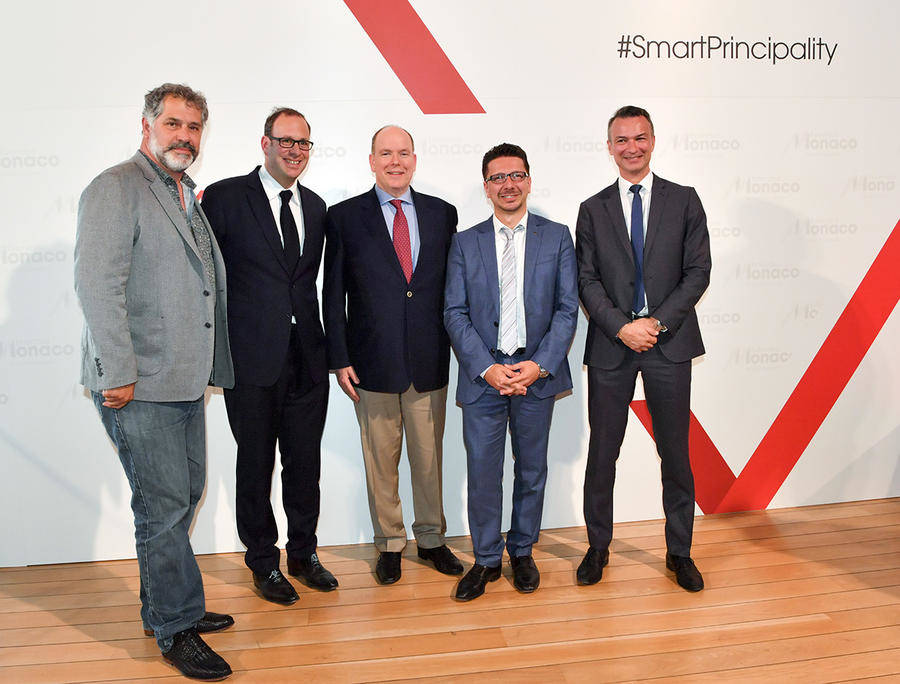
In honour of the anniversary of Prince Albert II’s accession to the thrown, the UN is hosting an exhibition in New York showcasing Monaco’s commitment to the environment and the oceans.

The exhibition was inaugurated by Ambassador of Monaco to the United Nations Isabelle Picco on 11th July, 14 years after Prince Albert’s enthronement as ruler of the Principality.
Titled ‘Monaco and the Ocean’, the exhibition features more than 60 snapshots highlighting the leadership of Prince Albert and his government in the protection and promotion of the oceans as well as preventative measures that have been taken in the Principality.
Covering everything from marine protected areas to sustainable urbanization and scientific campaigns such as Monaco Explorations, the photo exhibition reveals to the audience the different ways Monaco is implementing the SDG14 – a global call to action.
As part of the inauguration, Prince Albert sent a video message supporting the UN’s campaign for the elimination of disposable plastics, which have been banned from United Nations Headquarters in New York since 6thJune.
More than 300 guests were present at the inauguration, including E. Maguy Maccario-Doyle, Ambassador of Monaco to the United States, and Gildo Pallanca Pastor, Consul General of Monaco in New York.
Sign up for the Monaco Life email newsletter.